Tag: crossfit
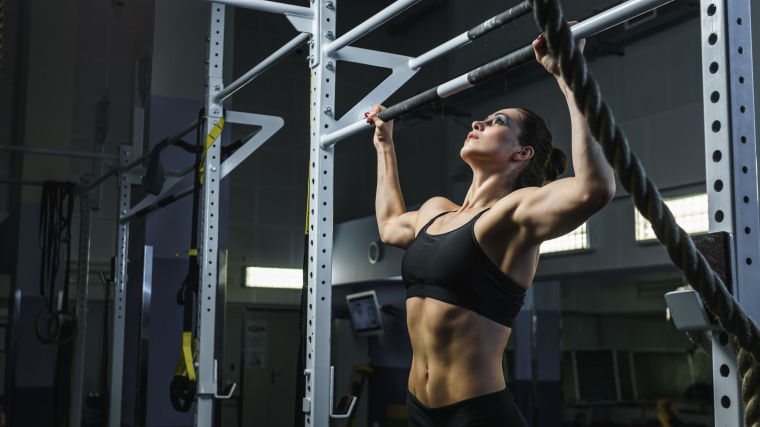
The Best CrossFit Workouts for Building Muscle to Break Through Plateaus
You probably didn’t come to CrossFit for the muscles. Instead, you probably showed up because you were looking to improve your cardiovascular health, get stronger, or just find a fitness community. But, if we’re honest, the muscles probably didn’t hurt.
If you’ve ever even glanced in the direction of the CrossFit Games, you’ll have noticed that CrossFitters tend to be absurdly ripped. For the uninitiated, this can be intimidating, to say the least. But you don’t have to take your shirt off during your WODs (workouts of the day) to be a real CrossFitter. You’ve just got to keep showing up — the muscles will likely show up, too.
Credit: Denis Kornilov / Shutterstock
But if you did come to CrossFit for all that sweet muscle mass, don’t worry. We’ve got the best CrossFit workouts for building muscle just for you. Because even though your average WOD will help you get jacked, these CrossFit-style workouts are designed to focus on hypertrophy — muscle growth — and take your boulder shoulders and teardrop quads to the next level.
Editor’s Note: The content on BarBend is meant to be informative in nature, but it should not be taken as medical advice. When starting a new training regimen and/or diet, it is always a good idea to consult with a trusted medical professional. We are not a medical resource. The opinions and articles on this site are not intended for use as diagnosis, prevention, and/or treatment of health problems. They are not substitutes for consulting a qualified medical professional.
Best CrossFit Workouts for Building Muscle
Best CrossFit Workout for Building Upper Body Muscles
CrossFitters use their upper bodies like nobody’s business. Even if a movement seems to be about their lower bodies, it’ll often be performed in a way that taxes the upper body. For example, lunges seem like they’re all about your lower body until you’re performing them front-racked or overhead.
But for this workout, you’re going to focus entirely on your upper body. The goal here is to really shore up the smaller muscles of your upper body that risk getting overshadowed by your back and chest. Your triceps and biceps are going to get a lot of play, so get ready to feel a pump.
The Workout
CrossFit workouts are about pushing your limits. Even when workouts look simple on paper, they’re designed to present extreme challenges in practice. Here, the rep scheme combined with working against the clock will get very taxing, very quickly.
12-minute AMRAP (as many rounds as possible)
Especially since you’ll be performing strict chin-ups instead of kipping pull-ups, you’ll have to be very strategic about how you’re splitting up your reps. Consider modifying the movements later in the workout even if you don’t have to right away.
Movement Modifications
This workout is deceptively simple, but the fatigue will build extremely quickly. Since there are only two moves — and they’re both upper-body focused — your exhaustion will have nowhere to hide.
You might not have to modify this workout right out of the gate. But to keep working up to the 12-minute mark, you might need to use variations of these exercises to get you to the finish line with sharp form.
Some modifications for the chin-ups follow:
Some alternatives for the bar dip follow:
Band-Assisted Dip
Bench Dip
Close-Grip Push-Up
Best CrossFit Workout for Building Lower Body Muscles
CrossFit will take a toll on your lower body, plain and simple. Anyone who’s ever suffered through a WOD can probably tell you that it’s like getting hit with multiple leg days at once when you try to hobble out of bed the next day.
But that’s no reason not to give your legs a little extra love. The more attention you give your legs — as long as you’re recovering well — the better equipped you’ll be to face down the rigors of your next WOD.
The Workout
This workout will go after all areas of your legs, including one place where it’s notoriously difficult to build muscle — your calves. Make sure that you’re giving your heels and ankles ample attention in your warm-up and recovery time.
Five rounds, for time:
For each lift, choose a weight that feels very manageable during the first round but will be challenging by round three. It should be quite difficult to get through unbroken by round five.
Movement Modifications
Unless otherwise specified, calling for back squats and front squats indicates using a barbell. If you need to modify, you can instead use dumbbells.
To get the stimulus of a back squat, stand with each foot on a bumper plate or a step riser, with a gap in between just wide enough to accommodate a dumbbell. Squat while holding a dumbbell between your hands with your arms long. Keep your torso tall.
This position will allow you to sink deep into the squat while using a significantly heavier weight than you might be able to goblet squat.
Speaking of goblet squats, this is an excellent option for modifying your barbell front squat. If you need unweighted versions, you can use a PVC pipe or even a broomstick to simulate the positions of a barbell in both types of squats. You can also, of course, simply perform air squats.
Instead of doing a barbell Romanian deadlift, you can also swap in dumbbells. You can also perform hip hinges with the same form as a Romanian deadlift, but with empty hands. Just focus on maintaining tension in your glutes and hamstrings. Move slowly and with control.
If you can’t pull off a single double-under, let alone 20, try for single-unders — regular jump rope skips. Without a jump rope, you can simply simulate jumping rope with small hops. If your feet, knees, or hips can’t abide jumping, you can opt instead for eccentric calf raises. Be sure to stretch your calves — maybe even treat yourself to a calf and heel massage — afterward.
Best CrossFit Workout for Building Core Muscles
You do not need a six-pack to be an incredible CrossFitter. You can, indeed, be incredibly strong and fit without your muscles showing through a low body fat percentage (which is how one acquires a visible six-pack).
But if you’re looking to build out your core muscles, you’ve come to the right place. This workout will have you taking advantage of some classic CrossFit moves to help you build an incredible amount of core strength and muscle mass.
The Workout
Here, you’ll be performing some of the most well-known CrossFit exercises in one of the most well-known CrossFit formats: the descending rep ladder of 21, 15, and nine reps. You’ll perform 21 reps of each exercise first. Then, do 15 of each exercise. Finish off your workout with nine of each movement.
21-15-9 reps, for time:
Movement Modifications
If need be, you can sub in a goblet squat or even an air squat to make the front squats more accessible. Try to use a weighted variation if you can, as the front-loading of the weight is what makes the front squat move particularly good for core strength.
Without access to a glute-ham developer (GHD), you can perform sit-ups on a decline bench. You can also simply perform regular sit-ups.
If you can’t do a full toes-to-bar, consider hanging leg raises or even hanging knee raises. No access to a pull-up bar? Try lying leg raises instead.
A modified workout might go like this:
21-15-9 reps, for time:
Goblet Squat
Sit-Up
Hanging Knee Raise
Best Beginner CrossFit Workout for Building Muscle
CrossFit beginners truly have their work cut out for them. Not only are they fighting an uphill battle of learning new skills, but they’re also developing strength and high-intensity endurance all at the same time.
To help ease the transition into CrossFit, beginners might find a muscle-building workout more their speed. It’s less traditional CrossFit and more introductory style to help athletes find their footing. You’ll be using a classic, sport-specific rep scheme — a descending ladder — but you’ll be doing it with an eye toward hypertrophy.
The Workout
These movements look simple on their own, but they get very intense, very quickly. If you’re less used to the descending ladder nature of many CrossFit workouts, think of this workout as one big drop set. But instead of dropping the weight, you’re dropping the number of reps you perform with each round.
Three to five rounds, for time:
Movement Modifications
While this workout is already designed for beginners, that doesn’t mean everyone’s beginner level looks the same.
For example, ring rows might be too unstable for you. In that case, try inverted rows in a Smith machine or with a barbell anchored in a power rack. You can also perform light barbell rows — the sheer volume of reps will add up.
Bulgarian split squats may not be accessible to you in terms of balance or your current level of hip mobility. In that case, try forward or reverse lunges. If you need to, hold onto the handles of a TRX suspension trainer or equivalent to help give you a counterbalance. Your upper body’s engagement can also give your legs a little bit more strength if need be.
The box step-ups can be replaced with a regular step instead of a full plyo box. Or, you can substitute high knee marches in place.
If you can’t lift overhead, consider swapping in bench presses. In situations where an empty barbell is too heavy for you, you can also simply use lighter dumbbells.
Best No-Equipment CrossFit Workout for Building Muscle
Just because a workout is bodyweight-only doesn’t make it equipment-free — especially in CrossFit. Bodyweight moves include everything from ring muscle-ups to box jumps, all of which require equipment.
But with this equipment-free CrossFit workout, you’ll be able to build muscle (and get your heart rate going) anytime, anywhere. You’ll need enough space on the ground for you to essentially be able to lie down. Otherwise, space won’t be an issue.
The Workout
Don’t mistake the lack of equipment for easiness. This workout is tricky — especially if you’re looking to perform each move to your maximum potential. With your overhead squats, keep your upper body just as engaged as you would if you were holding a loaded barbell.
Be just as disciplined with your form as you would be hefting a lot of weight. This diligence will pay off in spades when you start to notice all the muscle you’ve built.
21-15-9 reps, for time:
Movement Modifications
If any of these movements aren’t for you, that’s alright — they’re relatively simple to swap out.
For athletes who struggle with burpees, there are a few options. You can step back into a plank position instead of jumping back. If you’re pregnant or otherwise can’t get your belly on the ground, you can hike your hips up to help lower your chest. You don’t need to perform a jump at the top, and you can similarly eliminate the push-up from the bottom.
With the bodyweight overhead squat, simply keep your hands down or out in front of you instead of overhead if the reach is too intense for you. You might also sit down on a stable chair instead of going to full depth if need be.
Perform a regular push-up instead of a pike push-up if you have to. You can also do a wall push-up, an incline push-up, or a push-up from your knees.
Finally, eliminate the jumping part of the jump squat and simply squat, down to a steady chair if you need to. To maintain a similar explosive stimulus from jumping, sink into your squat slowly. When you’ve reached your full range of motion, explode upward quickly. No need for your feet to leave the floor for you to start generating power.
Benefits of Building Muscle for CrossFitters
But should CrossFitters focus specifically on building muscle? If you’re able to dedicate the recovery you’ll need to accommodate any extra training sessions, then the short answer is yes — you probably should.
Prevent or Break Through Plateaus
Make no mistake — even smaller muscle groups get a tremendous amount of work from the functional compound movements found in any CrossFit WOD. But by building those smaller muscles, you’ll likely be able to improve your lifts a tremendous amount. How?
Take kipping pull-ups, for example. Your entire body and core will be taken to town in an incredibly intense way. Your grip will be on fire by the end of your sets. And, yes, that will give a tremendous amount of strength and development — even size — to your forearms.
Credit: UfaBizPhoto / Shutterstock
But when the workload gets to be too much, your smaller muscles are likely to burn out before your bigger muscles. That creates a limiting factor in how many reps you can handle unbroken before taking a break to shake it off.
Pausing between reps costs valuable time and can hamper your gains. Relatively underdeveloped smaller muscle groups may even be the culprit behind your latest plateau.
Building up your smaller muscles (like your forearms, biceps, and triceps), you’ll be shoring up the bottom line of your bigger lifts. In doing so, you’ll be raising the bar on all of your lifts and WODs, helping you improve that much more before facing down your next plateau.
Combat Muscle Imbalances
Since so many CrossFit movements are bilateral — barbell work and deficit handstand push-ups, for example — it’s easy for your dominant side to take over. If you’re a lefty, the left side of your body might bear more of the brunt of weight distribution during bilateral work. This can create both strength and muscle imbalances.
Perfect symmetry might not matter all that much to you if you’re not a physique athlete. But it’ll likely matter to you in terms of injury prevention. Keeping your muscles as balanced as you can be able to help make your body more resilient against injury. And the longer you can go without injury, the more likely you are to tackle each WOD to the best of your ability.
Help Transition Into CrossFit
Coming over to the dark side from a different strength sport? Welcome in. You’re likely used to performing a set number of sets and reps to induce a certain adaptation — say, building more strength or stimulating hypertrophy.
In CrossFit, you’ll be counting reps alright. But you’ll be doing it staring down a ticking clock and burning lungs and muscles all over your body. Training for hypertrophy — giving a CrossFit flair to the types of workouts you’re already familiar with — can help CrossFit beginners feel confident about their new sport.
CrossFit Warm-Up for Hypertrophy
No matter what your specific session goal is, you always want to warm up before tackling your WOD. Warm-ups not only prepare your body for the rigors of your upcoming workout — but they also optimize your performance and help make you more resilient against potential injuries.
When you’re training for hypertrophy, you’ll want to pay close attention to smaller, often overlooked muscle groups. You’ll focus closely on these muscle groups — think, your rear delts, triceps, and biceps — during your hypertrophy training. So, you’ll also want to single them out during your warm-up.
Cater each warm-up to the specific movements you’ll be doing that day. For example, spend extra time on hip mobility if you’re going to be snatching, front squatting, or lunging. Take extra time with your shoulders and thoracic mobility if you’re going to be doing any kipping or overhead work.
But generally speaking, CrossFit workouts are going to involve your whole body in some way, shape, or form. Because of that, a good CrossFit warm-up should cover all your bases.
Air Bike: 3-5 minutes, low intensity
Band Pull-Apart: 15-20
Active Frog Stretch: 60 seconds
World’s Greatest Stretch: 6 per side
Lateral Lunge: 8 per side
Half-Kneeling T-Spine Rotation: 8 per side
Bear Crawl: 30 seconds forward, 30 seconds backward
Crab Reach: 8 per side
Session-Specific Strength Exercise: 2-5 ramp-up sets, 3-6 reps per set*
*For each main lift of the day, get a feel for the movement with your bodyweight only or an unloaded barbell. Gradually increase the intensity of the movement in separate sets until you approach the weight or intensity of the exercise as prescribed in your workout.
Don’t perform so many reps that you’ll tire yourself out, but aim to get your blood pumping and your muscles firing.
How to Program CrossFit Workouts for Building Muscle
In CrossFit, you’ll be challenging pretty much all your muscles in every session. It’s a big commitment to toss in an additional focus on intentionally building certain muscles. Here’s how to program intelligently to make sure that you’re maximizing your gains and minimizing your risks.
Focus on Recovery
There’s no getting around it — CrossFit is a whole lot of work. Adding more sessions to your regimen to build muscle can run the risk of interfering with your body’s ability to adequately recover from one session to the next.
Help your muscles recover by ensuring that you’re getting enough sleep and food to fuel your performance. Make sure you’re warming up and cooling down before and after each workout to help you stay more resilient against injury. Consider self-myofascial massage with foam rollers and filling out your stretching routine with resistance bands.
The more you focus on recovery, the more you’ll be giving your muscles the space and fuel they need to grow.
Program on Separate Days
This option may be especially appealing to strength athletes who are newer to CrossFit. If you’re currently doing one or two CrossFit WODs per week — on your weekends, perhaps — consider sprinkling these muscle-focused workouts into the rest of your week. That way, you won’t be taking away from your recovery.
You will also be giving your body a more familiar way to sink into CrossFit training. The sets and rep schemes typical of hypertrophy training in other sports like powerlifting, weightlifting, and bodybuilding can help you ease into the conditioning and mental rigors of CrossFit. You’ll be building muscle and getting better at CrossFit as you go.
Add Hypertrophy Finishers
For those who are more experienced with CrossFit, you might have trouble adding extra hypertrophy-based sessions to your program. You may already be doing two-a-day workouts or simply doing an intense WOD every day.
In those situations, it might eat into your recovery — or simply not work logistically — to add another standalone workout into your program. To solve this problem wisely and with an eye on your recovery, simply add a short hypertrophy-focused session to the end of your WOD.
Complete your WOD, grab some water, wipe off the sweat, and dive back in for a slightly less intense bout of muscle-building. Stack your hypertrophy sessions strategically. If you’re looking to drive muscle growth in your legs, choose that session after a legs-focused WOD. That way, your legs will get all the action in one day and you can consolidate your recovery period.
Program Around Your Weak Points
Be smart about which muscle-building workouts you want to focus on. Focus on what aspects of your performance are lagging during your WODs.
Having trouble with your shoulder-to-overheads? Focus on upper body hypertrophy, since your troubles may lie with weaker triceps for lockout strength. Having trouble with your deadlift lockout? Work on building those glutes and hamstrings with a lower-body hypertrophy workout instead.
Build Those Muscles
There’s no way around it — CrossFit pros are ripped. If you’re looking for your piece of the hypertrophy pie, you might not want to depend on WODs alone. While you can (and probably will) gain a lot of high-quality muscle mass with just your regular training, you can pack more muscle onto your frame with hypertrophy-specific CrossFit workouts.
Integrate these CrossFit workouts for building muscle into your training program after your typical sessions or on their days entirely. Make sure your recovery is dialed in, then proceed to build up your weakest links with hypertrophy sessions. Your WODs will thank you — and so will the size of your muscles.
If you’re ready to find out more about everything CrossFit training, here are some articles to sink your teeth into next.
Featured Image: Denis Kornilov / Shutterstock
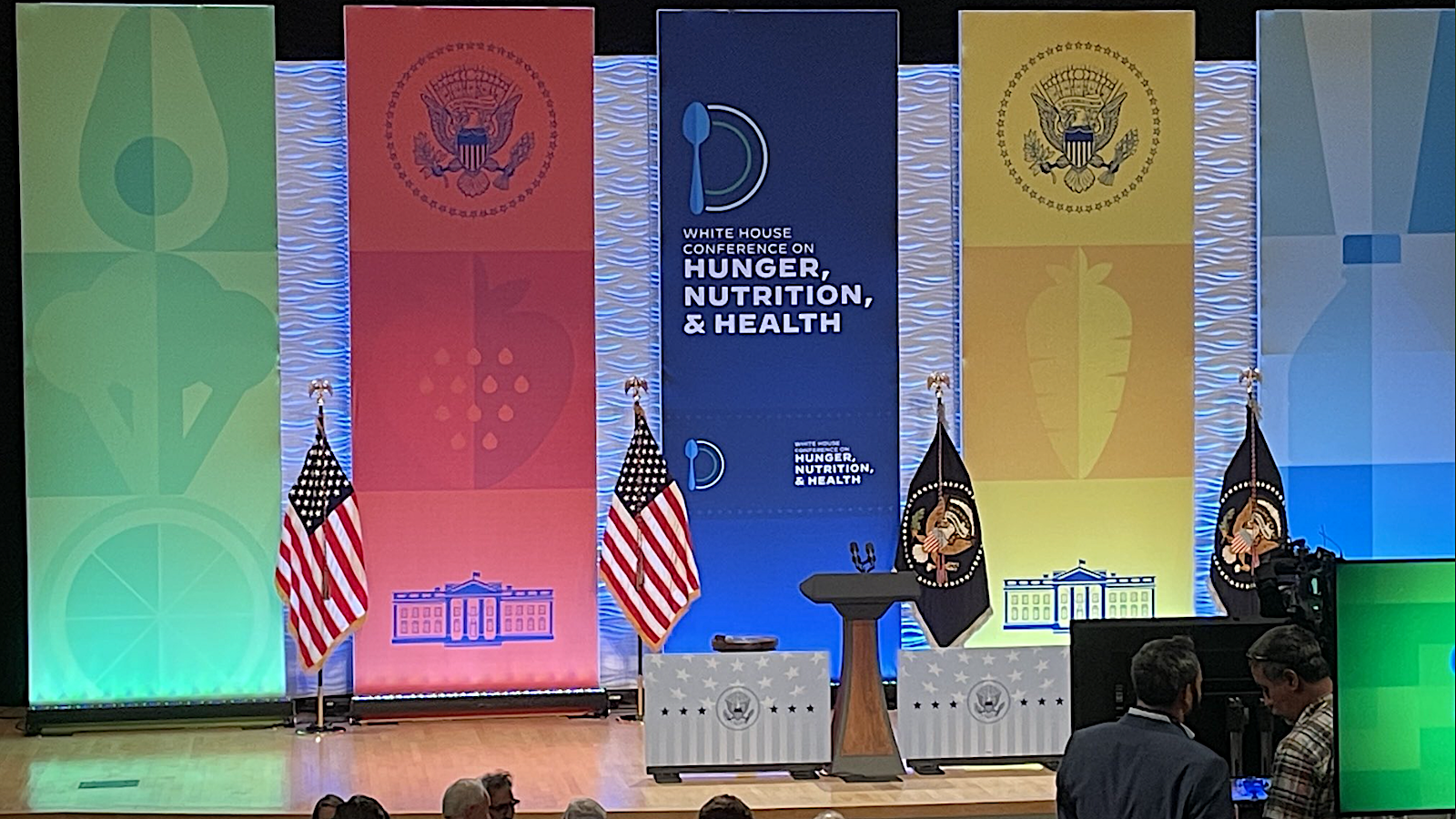
Community Gyms Coalition Launches “Fitness Is Essential” Campaign
Following the lockdowns of the COVID-19 pandemic in 2020, some reports showed that gym memberships fell by nearly 40 percent, leading to an estimated $15.6 billion loss in revenue by October 2020.
In November 2020, the Community Gyms Coalition (CGC) — a collective of fitness outlets, including Anytime Fitness, CrossFit, Orangetheory Fitness, and Planet Fitness, which represent “more than 15,000 community gyms and fitness facilities across the US that serve over 25 million members” — was founded in an attempt to lobby Congress for financial relief in an unprecedented time.
It’s time for all Americans to recognize that Fitness is Essential.
On Feb. 21, 2023, the CGC announced the launch of the “Fitness is Essential” campaign as part of its commitments to the White House Conference on Hunger, Nutrition and Health.
Proud to collaborate with the White House Conference on Hunger, Nutrition and Health! #WHConfHungerHealth #fitnessisessential pic.twitter.com/SsSIx1pFNZ
— Community Gyms Coalition (@GymsCoalition) September 28, 2022
[Related: CrossFit Announces Partnership With Chipotle for 2023 Open]
Per their press release, the components of the campaign include education about the “positive effects of physical activity and fitness on mental health and well-being” and increased access to resources that include the following:
Free day passes at CGC members’ fitness facilities
Fitness goal and body intelligence consultations
The “Fitness is Essential” campaign intends to “reinforce the Department of Health and Human Services’ Move Your Way® campaign,” which aims to use the second edition of the Physical Activity Guidelines for Americans as a way to increase people’s physical activity levels and thereby lead healthier lifestyles.
“CGC members will raise awareness with community leaders and policymakers about steps they can take to encourage physical activity and fitness in communities across the country,” according to the CGC press release.
Since its founding, the CGC has been effective at a legislative level in helping gyms recover from the financial losses sustained during the COVID-19 pandemic. The congressional Gym Mitigation and Survival (GYMS) Act of 2021 was introduced on Feb. 5, 2021, by U.S. Representatives Mike Quigley (IL-05, Democrat) and Brian Fitzpatrick (PA-01, Republican) and garnered 164 co-sponsors.
The GYMS Act was subsequently sponsored by senator Tammy Duckworth (IL, Democrat) and introduced to the Senate on May 13, 2021, when it was read twice and referred to the Committee on Small Business and Entrepreneurship. It has 29 co-sponsors in the Senate at the time of this article’s publication.
Don’t take your health for granted. Get healthy by getting fit! #fitnessisessential https://t.co/k5Dm0SygRd
— Community Gyms Coalition (@GymsCoalition) February 21, 2023
The GYMS Act of 2021 “authorizes the Small Business Administration to make initial and supplemental grants to privately owned fitness facilities that primarily provide health or fitness services,” without exceeding $25 million to any recipient to help pay for business expenses.
FitnessisEssential.org serves as the campaign’s “central hub for public outreach,’ which aims to “raise awareness about why fitness is essential for overall physical and mental health.”
Featured image: @GymsCoalition on Twitter
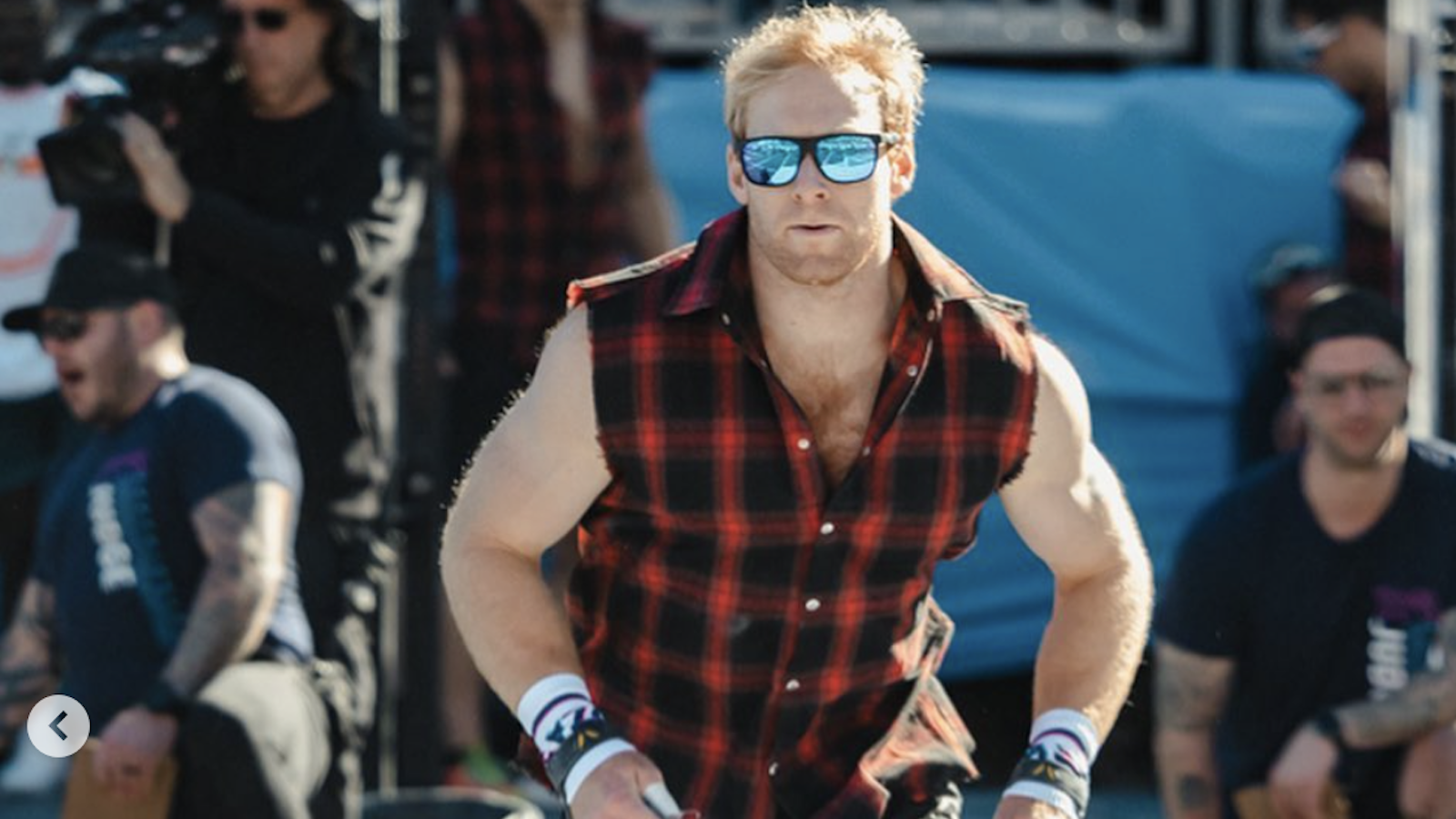
2023 CrossFit Open — Workout 23.2 Released
The second week of the 2023 CrossFit Open has arrived, and with it, the release of workout 23.2. The live announcement occurred in Midland Park, NJ, at CrossFit Bison. It featured 2022 CrossFit Games runner-up Roman Khrennikov‘s head-to-head battle against 2021 CrossFit Games runner-up Patrick Vellner.
Workout 23.2 is comprised of two parts. Part A combines burpee pull-ups and shuttle runs, and Part B is a one-rep max thruster. Find each division’s variation of the workout via the links below:
23.2 CrossFit Open Workouts
Check out the live announcement in the video below, courtesy of the CrossFit Games Youtube channel, followed by a breakdown of each division’s variation of workout 23.2:
[Related: CrossFit Announces Partnership With Chipotle for 2023 Open]
Rx’d
23.2A:
Complete as many reps as possible in 15 minutes of:
Five burpees
10 shuttle runs (One rep = 25 feet out/25 feet back)
Add five burpees after each round.
23.2B:
Immediately following 23.2A, athletes will have five minutes to establish the following:
One-rep-max thruster (from the floor)
Each athlete’s score will be their max thruster in pounds.
[Related: How To Train Your Back For Maximum Hypertrophy]
Scaled
23.2A:
Complete as many reps as possible in 15 minutes of:
Five burpees
10 shuttle runs (One rep = 25 feet out/25 feet back)
Add five burpees after each round.
23.2B:
Immediately following 23.2A, athletes will have five minutes to establish the following:
One-rep-max thruster (from the floor)
Each athlete’s score will be their max thruster in pounds.
Foundations
23.2A:
Complete as many reps as possible in 15 minutes of:
Five burpees
10 shuttle runs or walks (one rep = 50 feet)
Add five burpees after each round.
23.2B:
Immediately following 23.2A, athletes will have five minutes to establish the following:
One-rep-max thruster for best technique and load.
Time begins immediately following the completion of 23.2A. Start with the stick and only add load if the technique is sound. If performing this workout without a coach, err on the side of safety and don’t worry about adding load as you go.
[Related: How to Do the Dumbbell Split Squat for Bigger Legs and Better Balance]
Adaptive Divisions
There are eight Adaptive Divisions in the CrossFit Open, which all have their own variations and movement standards.
These divisions are: Upper Extremity, Lower Extremity, Multi-Extremity, Vision, Short Stature, Seated Athletes (With Hip Function), Seated Athletes (Without Hip Function), and Intellectual. As with Individual and Age Groups, each division has a women’s and men’s division.
For division-specific details about the expectations for each division, check out the division workout descriptions and scorecards on the CrossFit Games website.
More CrossFit Content
Featured image: @pvellner on Instagram
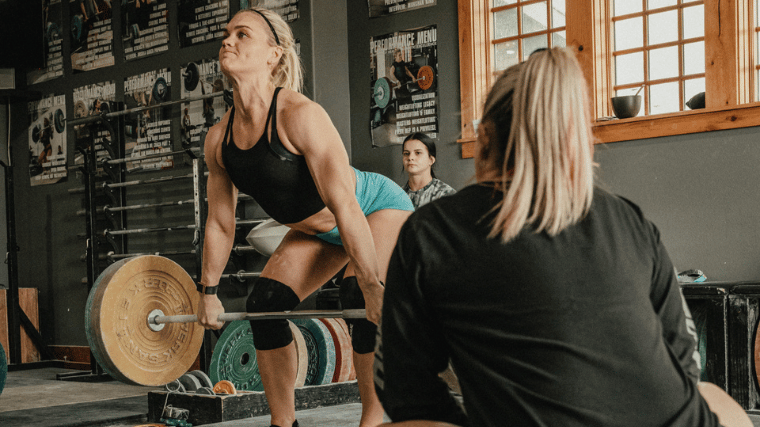
Mat Fraser’s HWPO Will Launch “Lift” Weightlifting Program on Nov. 7, 2022
Mat Fraser is building a coalition. On Nov. 7, 2022, his organization Hard Work Pays Off (HWPO) Training will launch a new branch of its coaching service called “HWPO Lift.”
Lift, a 12-week Olympic lifting-based strength training cycle, is supervised by Team USA Senior International weightlifting coach Aimee Anaya Everett of Catalyst Athletics.
Everett has stated that a primary goal of Lift is to “take the guesswork out of programming” so participants can sharpen their Olympic lifting skills while still keeping up with the varied challenges presented in CrossFit.
Credit: @hwpotraining
HWPO Chief Executive Officer Matt O’Keefe noted in an internal release that Lift is designed to “meet people where they’re at,” stating that the organization recruited Everett to spearhead Lift’s programming due to her vision and expertise as a weightlifting coach.
What Is HWPO Lift?
The pre-registration period for Lift will open on Oct. 30 and close a week later on Nov. 6, 2022. HWPO notes that participants who pre-register will unlock extra perks such as weekly calls with Everett and detailed program review.
Five-time Fittest Man on Earth® Fraser says that, under Everett, Lift will improve your Olympic lifting positional strength, technique, and movement quality; without having to give up your engine along the way.
Here’s what comes with Lift:
12 weeks of weightlifting-specific programming for the snatch, clean & jerk, and their accessories.
Optional conditioning circuits and metcons attached to the end of every training day.
Access to the HWPO Training App and its movement library.
Entry into the members-and-staff only HWPO community forum on the Circle app.
Building two separate athletic qualities in tandem takes both expertise and experience. Lift coach Everett has an extensive resume supervising athletes at the highest levels of both sports.
Who Is Aimee Anaya Everett?
Everett made history at last summer’s Tokyo Olympics as the first female weightlifting coach to attend a Games with Team USA. However, she began her coaching resume long before 2021. Everett coached the first-ever women’s CrossFit Games champion, Jolie Gentry, at the inaugural event in 2007.
Credit: @hwpotraining
[Related: IWF President Speaks on Diversity in Weightlifting and Successes of Tokyo Olympics]
Since then, Everett has stewarded athletes at Regionals and the Games themselves five times each. In recent years, she’s focused more exclusively on working with the best Olympic lifters in America.
Her achievements in competitive weightlifting as a coach include:
15 American Records
2 Pan-American Records
Along with multiple appearances at the World Weightlifting Championships (WWC). Everett personally coaches weightlifter Mattie Rogers, the United States’ most decorated Olympic lifter of the past decade. Rogers and Everett won a silver medal at the 2021 Worlds and are set to compete at the upcoming WWC in Colombia this December.
Hard Work Works
Fraser’s HWPO is rapidly becoming one of the most robust operations in functional fitness. Everett is but the latest pickup in a string of high-profile recruitments.
As the head of Lift, Everett boards HWPO alongside athletes like Amanda Barnhart, Mal O’Brien, and Sam Kwant, as well as strongman Rob Kearney. Kearney, a record-holding competitor in the log lift, oversees HWPO Strong.
Giving Everett the reins to Lift indicates that Fraser knows who the right people are for his people. HWPO Lift takes flight on Nov. 7, 2022.
Featured Image: @hwpotraining
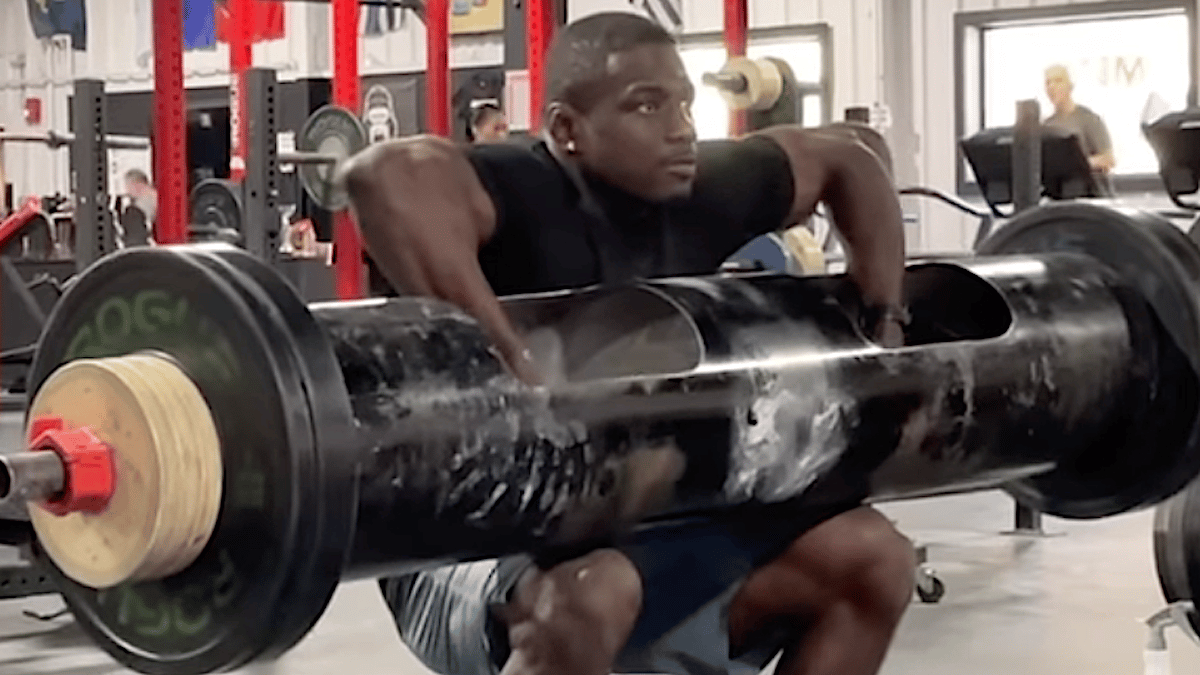
CrossFitter Chandler Smith Log Pressed 285 Pounds Ahead of 2022 Rogue Invitational
On Oct. 22, 2022, strongman Zach Hadge shared a post on his Instagram page wherein he coaches elite CrossFit athlete Chandler Smith in the log press. While it was curious at the time of the post why Smith was training a maximal lift in a different strength sport, it became clear when seven of the 10 events for the 2022 Rogue Invitational were announced a few days later.
The 2022 Rogue Invitational will feature a one-rep max log lift event titled “Texas Oak” on Saturday, Oct. 29, 2022. Check out Hadge’s post below:
Note: scroll to the left to see Smith’s lifts.
[Related: WWE’s Liv Morgan Takes Fans Through Her Grueling Glute Workout]
Elite CrossFit contests such as the CrossFit Games and the Rogue Invitational have incorporated a lot of strongman-inspired events into their program over the past few seasons. The 2022 Games event titled “Capitol” included a farmer’s carry and Husafell sandbag carry in its final stretch.
The 2022 Rogue Invitational follows that trend, and Smith seems to be preparing to press a potential event-winning weight overhead. Hadge’s caption in his post expressed how impressed he was with how Smith took to the new overhead variation:
This kid is something else. I haven’t been around focus like his in a very long time.
Smith also posted a video of himself from the training session on his Instagram, offering another angle. He wore a lifting belt but eschewed elbow sleeves, wrist wraps, and knee sleeves. Check it out below:
[Related: Strongman Hafþór Björnsson to Compete in Powerlifting Meet In December 2022]
I was fortunate enough to get the chance to work with two world-class strongmen in Rob Kearney and Zach Hadge ahead of the 2022 Rogue Invitational.
Hadge commented on Smith’s post that Smith’s max lift was 285 pounds.
Smith finished eighth overall at the 2021 Rogue Invitational, won by two-time reigning Fittest Man on Earth®, Justin Medeiros. As of this article’s publication, three of the 10 events have yet to be announced.
We’ll see if Smith’s strongman training in the lead-up to the competition kicking off on Oct. 27, 2022, in Round Rock, TX. He will compete against 19 other elite CrossFitters in the Individual Men’s division for six figures in prize money.
Featured image: @hadge_brothers on Instagram
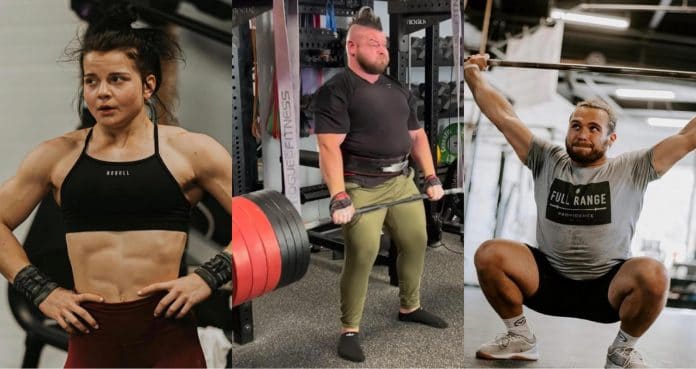
WATCH: Rob Kearney Takes On CrossFitters Mal O’Brien And Jake Marconi In Deadlift Challenge
Mat Fraser hosted an intense battle of strength between Rob Kearney and some elite CrossFit athletes.
The dynamics of strongman and CrossFit are extremely different and it is always interesting to see athletes go up against each other. In this instance, Rob Kearney took on CrossFitters Mal O’Brien and Jake Marconi.
Kearney has been busy competing in strongman fighting for some of the biggest prizes in the sport. O’Brien is coming off a year where she was named the 2021 CrossFit Rookie of the Year while Marconi continues to be an elite athlete. This contest was shown on Fraser’s YouTube page as the three athletes took on deadlifts for reps.
It is clear that Kearney has the largest deadlift of the group given his stance as a strongman. He deadlifted the day before this contest and completed four reps of 805 pounds. Completing many reps for time is not usually what he does during strongman contests.
“It depends on the contest. We have both a deadlift ladder working up to 880 and we’ll also have a deadlift for reps around 750. So typically, eight reps is the biggest I’ve done,” Kearney explained.
Deadlift Challenge
All athletes were tasked with completing the deadlifts and reloading their bars to the appropriate weight for the next lift.
385 pounds for 2 reps
365 pounds for 4 reps
335 pounds for 6 reps
315 pounds for 8 reps
255 pounds for 10 reps
195 pounds for 15 reps
“Rob deadlifted 805 for four reps yesterday. Rob clearly has astronomically high deadlift numbers so it’s kind of like a fun experiment. Jake has a 515 deadlift. Rob has a, best ever was 970. So close to double but I watched him do 805 for four reps yesterday and like, it was cardio,” fraser said.
“So let’s see how he does with way, way lower percentage for him but it’s something that is completely out of his element.”
[embedded content]
Rob Kearney made the first bars look easy given the weight that was on the bar. Fraser said that these lifts were “about 38 percent” of what Kearney can put up. This was referring to Kearney’s max lift of 970 pounds.
As the contest went on, Mal O’Brien finished the workout ahead of both Kearney and Marconi. Once the workout was over, Kearney admitted to liking this method of deadlifting.
“I actually like doing touch-and-go. Like time under tension wise. I feel like it’s a lot more effective. I always get more fried doing dead-stop reps.”
O’Brien took home the victory in this workout ahead of her scheduled appearance at the 2022 CrossFit Games in Madison, WI from Aug. 3-7. Rob Kearney will continue to train in order to compete against some of the other elite competitors in the world.
For more news and updates, follow Generation Iron on Facebook, Twitter, and Instagram.
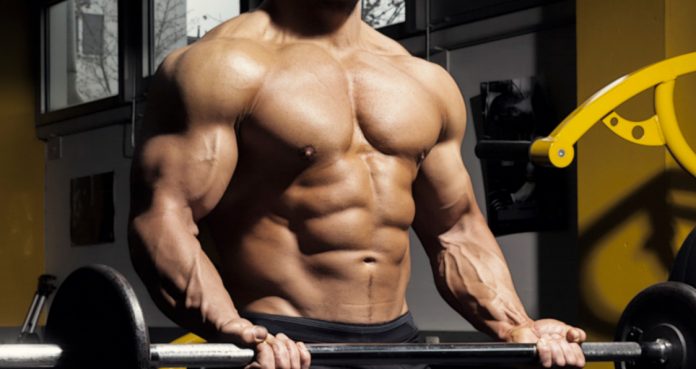
This is Why Bodybuilders Are More Jacked Than CrossFitters
Why Bodybuilders Are More Jacked Than CrossFitters
Comparing athletes from different backgrounds has become a standard, especially after the MMA athletes have started stepping into the boxing rings with their gloves on. The Connor McGregor and Floyd Mayweather fight have started a trend which is going to go on for a long time.
Bodybuilders and CrossFitters are no strangers to this comparison. Athletes from these backgrounds are compared to judge which is the better sport. Beginners make the comparison to choose between which sport they should opt for.
The Goal
While bodybuilders train to craft their physiques by building muscle mass and symmetry, CrossFitter’s workout to get fitter. The end goal of both these sports should be evident from the fact that bodybuilding shows determine the best physique on stage and the CrossFit games are meant to discover the fittest man and woman.
In a bodybuilding show, athletes are marked for the mass, symmetry, and conditioning of their muscles. In a CrossFit game, the athletes compete and have to outdo each other in the workouts.
Training
The bodybuilders train for breaking their muscle tissues and are always chasing the pump. Bodybuilders usually follow a training split and will have a set duration of rest time between working sets.
CrossFit athletes, on the other hand, follow a WOD (workout of the day) which is often a circuit which targets building strength and stamina. CrossFitters also do group workouts where a large number of people perform the same workout as a “class”.
Use of Machines
Bodybuilders use machines in their workouts to include variations and isolate their muscles. Most bodybuilding gyms are filled with numerous machines to add variety to the workouts and shock the muscles into growing.
CrossFit gyms are bare bone as compared to the bodybuilding gyms. The CrossFitters rely on functional movements in their training which usually include barbell, dumbbell, kettlebells, and pull-ups bars and don’t use a lot of machines.
Nutrition
It is no secret bodybuilders love protein. Bodybuilders follow a diet plan along with their training program. The bodybuilders also use supplements (now a billion dollar industry) to assist with their goals.
While the CrossFit athletes train to become the fittest individuals, their diet plans can be vastly different than that of the bodybuilders. The CrossFitters don’t usually use pre and post-workout supplements.
Advanced Training Techniques
The bodybuilders use advanced training techniques like drop sets, supersets, intraset stretching, BFR (blood flow restriction) training to shock their muscles and fill them up with blood and lactic acid. The bodybuilders will often train to muscle failure in their sets.
CrossFit athletes don’t train to exhaust their muscles and don’t use advanced training techniques. CrossFitters don’t usually target a specific muscle group like biceps or chest and will rather follow a full body workout.
Are you a bodybuilder or a CrossFitter? Let us know in the comments below. Also, be sure to follow Generation Iron on Facebook and Twitter.
*Header image courtesy of Envato Elements
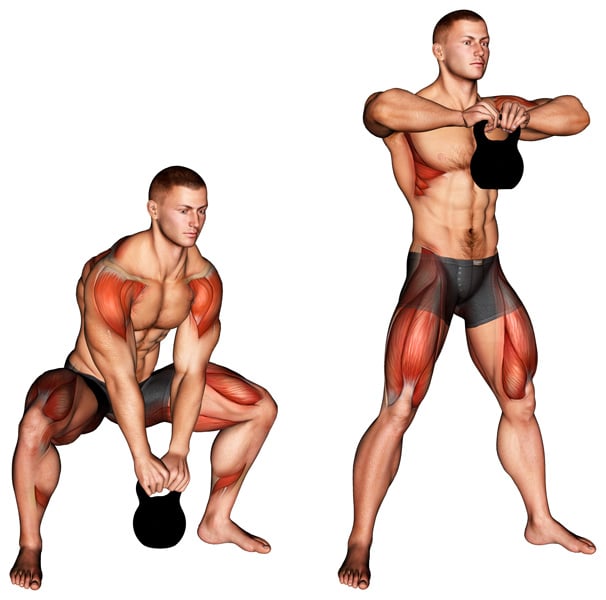
Kettlebell Sumo High Pull — How To, Variations and Muscles Worked
The kettlebell sumo high pull (or kettlebell sumo deadlift high pull) is a functional exercise that also builds strength and muscle throughout the entire body. It combines a deadlift and upright row, and, therefore isn’t just a simple movement which is why it’s so effective. Consequently, it’s not the best option for beginners to try…
WATCH: Martins Licis and Justin Medeiros Crush Massive Deadlifts In Workout
Martins Licis and Justin Medeiros put up enormous weight during a workout.
It is not everyday that Strongman and CrossFit are seen together but this happened when Martins Licis and Justin Medeiros took on a workout. Licis shared a video to his YouTube page on Tuesday of the duo crushing some deadlifts that were upwards of 600 pounds.
The last time these two were together was during the 2021 Rogue Invitational. Licis won gold in the strongman competition and set a new world record in Thor’s Hammer with a 136kg (300lb) lift. Medeiros was victorious during the CrossFit event. They continue to be some of the best in their own sport.
Licis won the 2019 World’s Strongest Man competition while Medeiros was named the 2021 Fittest Man on Earth. At XCEL Fitness in Holladay, UT, the duo got together to show off some impressive deadlifts.
[embedded content]
Heading into the holidays, it is only right that they showed off their festive spirit. Medeiros was seen wearing an elf’s hat while Licis went all out with a full Santa Claus costume. The session began with some rows on the machine while a makeshift Bag Toss was being set up. Medeiros was discussing the importance of warm-ups and how they can impact the workout.
“I do the same warm-up, which is, I do pigeon stretches, some runner’s lunge, some windshield wipers. I also got a gluten band for gluten activation, monster walks, banded squats, and sumo squats. After that, I’m probably good to go,” Justin Medeiros said.
Once the Bag Toss, which is a strongman event, was set up, Licis explained that the best throws will feel effortless. He cleared the crossbeam with a 20-pound bag while Medeiros was unsuccessful.
The two quickly moved onto deadlifts with some serious weight. Licis told the group to pause below the knee to make sure that there was complete control. Medeiros began with a 500-pound deadlift, which is nearly three times his bodyweight. His weight at the time of the list was not said but he is listed at 190 pounds on the CrossFit website.
Martins Licis was next and completed five reps with 605 pounds. Licis has been lifting heavy in the gym preparing for the 2022 Arnold Strongman Classic. He will enter the competition as one of the favorites to take home the prize.
The session ended with one-minute Each bike challenges. The full workout can be viewed on Licis’ YouTube page.
Martins Licis will be back in action from March 3-6 during the Arnold Strongman Classic. Justin Medeiros is in his offseason but is preparing for the 2022 CrossFit Open, which begins on Feb. 24.
For more news and updates, follow Generation Iron on Facebook, Twitter, and Instagram.

CrossFit vs Bodybuilding vs Powerlifting – Which One Should You Be Doing?
Choose Between The Three Heavyweights: Crossfit vs Bodybuilding vs Powerlifting
A person has many options to choose from when they decide they need to work on their health and fitness. Bodybuilding and powerlifting are relatively old sports as compared to CrossFit which has earned a loyal following and is spreading like wildfire.
While you could be the jack of all trades and can do CrossFit, bodybuilding, and powerlifting, you won’t see much progression in any of them. Choosing one sport and sticking with it will get you better results and mastery over it.
If you’re about to start your fitness journey or are thinking of making a switch between the sports, this article will help you learn more about the three sports. All the three sports have fundamentally different purposes and you need to choose the one which matches your goals.
CrossFit
If you’re someone who is into functional movements, CrossFit is the right fit for you. CrossFit is a high-intensity training program which helps people of all sizes and shapes build strength and conditioning.
According to CrossFit’s official website, “CrossFit contends that a person is as fit as they are proficient in each of ten general physical skills: cardiovascular/respiratory endurance, stamina, strength, flexibility, power, speed, agility, balance, coordination, and accuracy.”
CrossFit is different from bodybuilding and powerlifting as it is more accepting and encouraging. In CrossFit people usually workout in groups and follow a WOD (workout of the day). CrossFit gyms are radically different from commercial gyms as they don’t have any ellipticals, treadmills or weight training machines.
Bodybuilding
The main purpose of bodybuilding is to build muscle mass. Bodybuilders undergo high-intensity resistance training to build muscle and conditioning. If you’re a fan of the muscle aesthetics, bodybuilding is for you.
Bodybuilding first came into the limelight when Arnold Schwarzenegger, a 7X Mr. Olympia, made his Hollywood debut. Bodybuilding is the art of sculpting your body. You can work on your body and bring up your lagging muscle groups.
Bodybuilding primarily deals with building muscle mass and strength. As compared to CrossFit and powerlifting, bodybuilding is the most popular sport and you have a gym with weight lifting and cardio equipment on almost every block.
Powerlifting
Powerlifting is a test of strength and deals with lifting heavy weights on the three compound movements the bench press, deadlifts, and squats. Many people confuse powerlifting with strongman and Olympic lifting.
While powerlifting consists of the three compound movements, strongman is a wide-ranging sport. Strongman competitions challenge your strength and endurance and include events like log presses, truck pulling, keg lifts, etc.
Olympic lifting or weightlifting, on the other hand, consists of two lifts, snatch and clean and jerks. Snatch and clean and jerk are exercises you might have seen athletes perform during the Olympic games.
The main focus of powerlifting is to get stronger and lift heavier weights. A competitive powerlifter is always training to beat his own PR. If you have a knack for lifting heavy weights and enjoy doing it, powerlifting is the sport for you.
While all the three sports have different purposes, all of them require discipline in the form of training, nutrition and recovery.
Which of these three sports do you follow? Let us know in the comments below. Also, be sure to follow Generation Iron on Facebook and Twitter.
